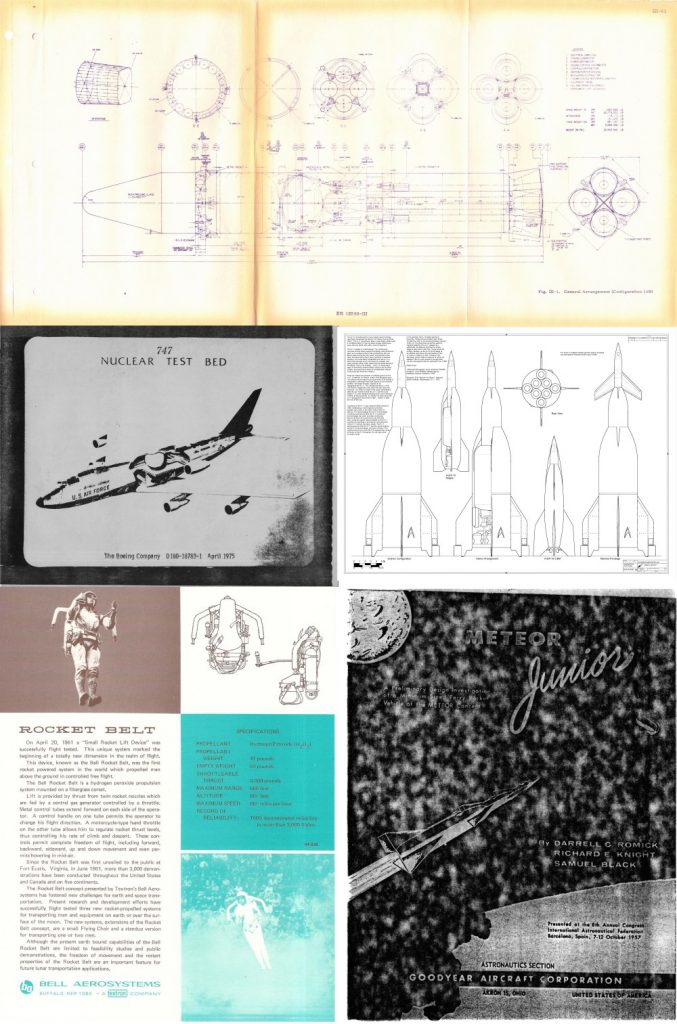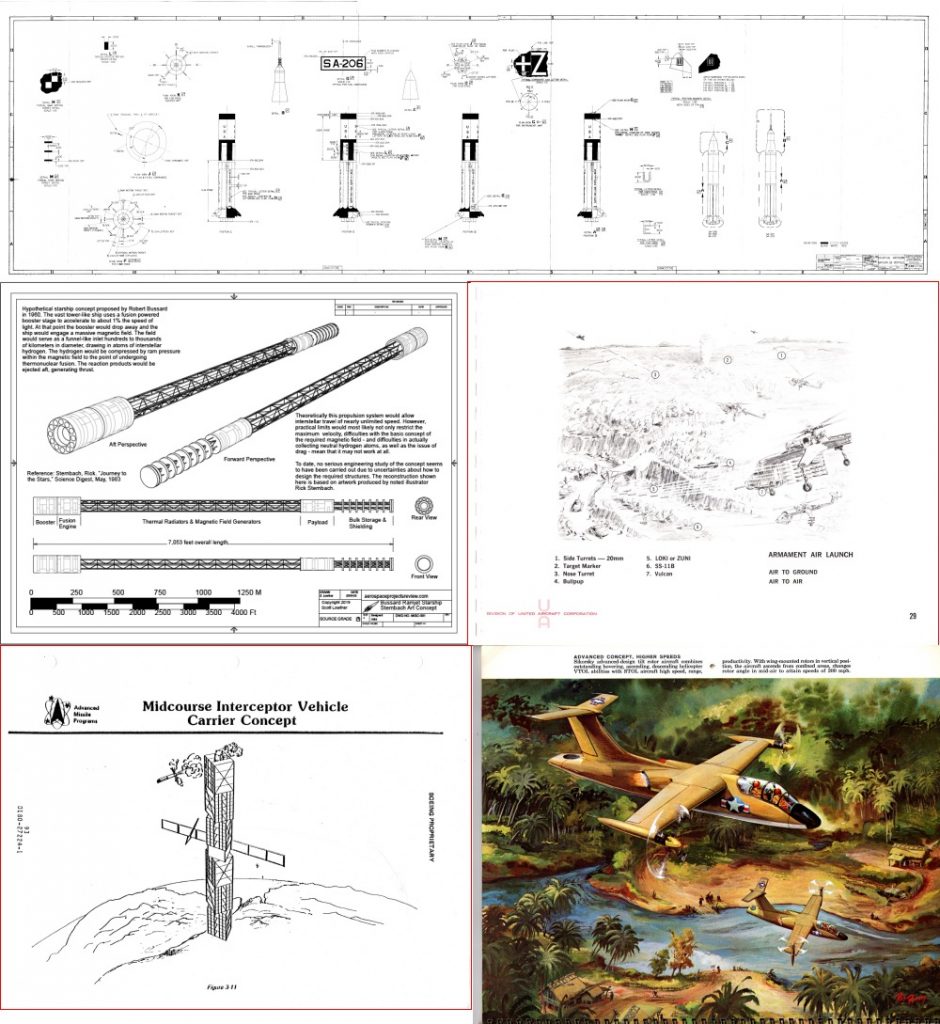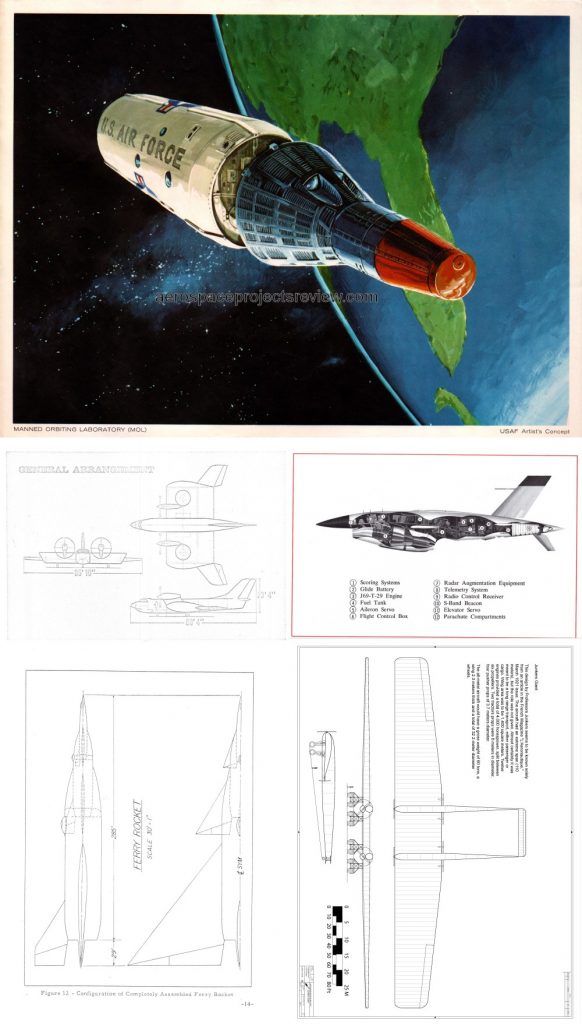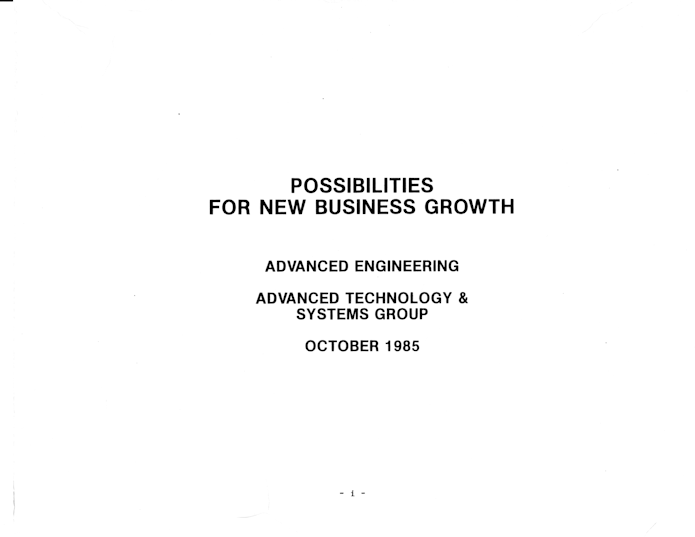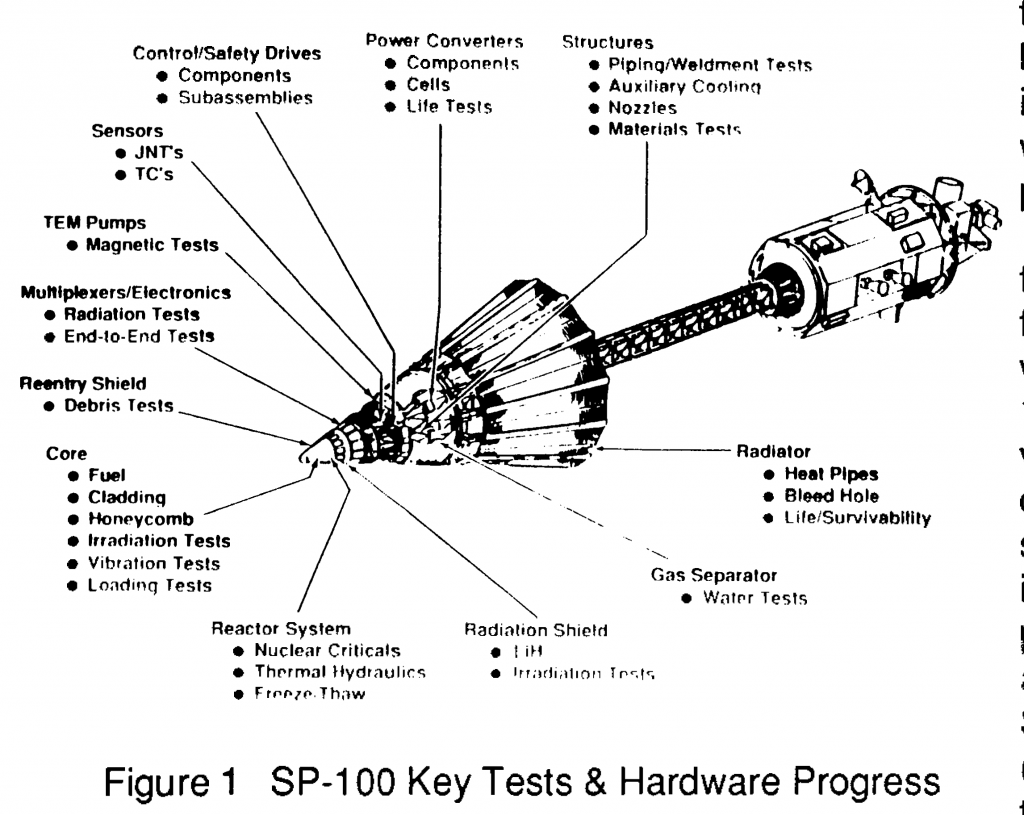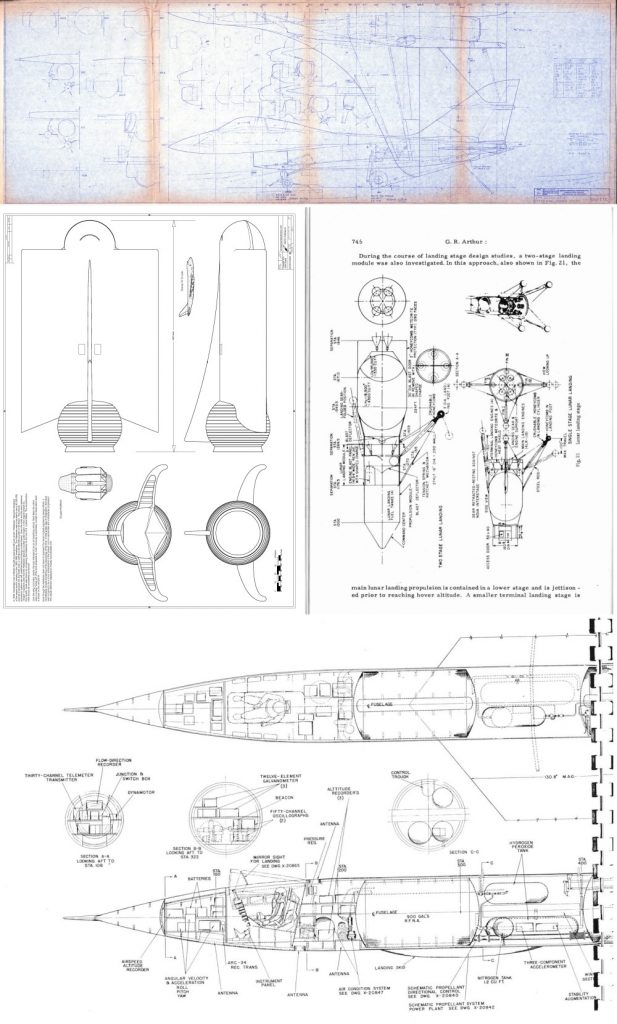One sizable document I’ve scanned for preservation is a Rockwell presentation package from October, 1985, showing a large number of space programs that the company could capitalize on. These included everything from minor mods to the Space Shuttle to major changes… stretching the orbiter, stretching the tank, adding additional boosters. Heavy lift boosters to put SLS to shame; heavy lift SSTOs; small experimental spaceplanes; manned military spaceplanes; space-based weaponry; space stations; space based nuclear power. Figured this stuff might be of some modest interest. So why not, I’ll post little bits of it from time to time.
There seems to be something wrong with our bloody Russians this week.
A Russian military ammo depot that blew up earlier this week just exploded again
But wait! There’s more!
‘Brief radiation spike’ after rocket engine blast in northern Russia
Ummmm…
Radiation levels peaked between 11:50 and 12:30 (08:50-09:30 GMT) before falling and normalising by 14:00, the city administration in Severodvinsk said on its website, without reporting how significant the spike had been.
…
“They advise everyone to close their windows and drink iodine, 44 drops per glass of water.”
And…
Is Putin covering up a nuclear disaster? Ambulances covered in protective film transport six Russians who suffered severe radiation poisoning in mystery explosion during ‘test of new hypersonic missile’
UMMMMM…..
The Daily Mail article suggests that this was a “Zircon” hypersonic missile that exploded. The 3M22 Zircon is an experimental scramjet-powered anti-ship/land target missile with range of about a thousand miles, with the capability of carrying a 600 kiloton thermonuclear warhead. If there was a radiation release, that would indicate that the missile was carrying an actual nuclear warhead… something that seems *really* unwise for a peacetime test flight. it’s unlikely that the warhead actually detonated; that would be Big News virtually impossible to hide. Instead I guess the warhead must have either been blown apart by the chemical explosives, or trashed on impact. in either case, it seems a little odd that the radiation spike would go back down. You’d think there’d need to be a substantial cleanup. Unless, I suppose, the plutonium actually caught fire and burned and the smoke rifted downrange…
There is also speculation that this wasn’t a Zircon, but a Burevestnik nuclear-powered cruise missile. The existence of a truly nuclear powered Burevestnik is by no means certain, but who knows. In the unlikely case that this what what crashed, then perhaps the burst of radiation came from the engine melting down in flight or on impact; the drop in radiation coming as the reactor sank into mud or a pond or even just the dirt. Shrug.
Today in “good riddance” news:
Democrat Eric Swalwell drops out of presidential race
He may be out of the race, but never forget that his party didn’t drop-kick him after he “joked” about committing mass democide against the American populace with nuclear weaponry.
And I’m a little surprised at the lack of interest in some of them:
Aerospace Vehicle Design Vol II Spacecraft Design by K. D. Wood, 1964
This one is real hard to come by, usually sells for well over $100. Only one bid, $19.99. This one ends in a few hours.
Three early “Space” books for kids: Fletcher Pratt, Jack Coggins, Lester Del Rey
Sure, they’re a little rough, but they’re old kids books, awesome in their massively over-optimistic way, and terribly low price. This one ends in a few hours.
Proceedings of the Shuttle-Based Cometary Science Workshop, 1976 NASA
This one ends in a few hours.
And this one:
XIIIth International Astronautical Congress Varna 1962, II (pp 483-1026)
This book of conference proceedings has papers on the Aerojet Sea Dragon, a general Electic “Direct” Apollo design and a nuclear-powered TV satellite. It’s already made the rounds on ebay once, no bidders. Huh.
And there’s other stuff.
A sketch of the 1980s/90s SP-100 space-based nuclear reactor, designed to provide 100 kilowatts of electrical power continuously for years on end. It would have been just the thing for applications where solar panels would not have been practical, such as deep space probes or military systems that need to be somewhat maneuverable. One might thing that replacing vast PV arrays with a small reactor would have made the satellites less visible… and on radar and likely visible light, that’s probably true. but that reactor and its radiators would have been quite visible in infra-red, apparent to any IR sensor pointed int its general direction. The sketch below shows not only the tests and progress that had been done on the SP-100, but also a conceptual payload of an undefined sort. It seems to be festooned with sensors.
Someone is selling a contractors model of an engine for a cruise missile on ebay. The engine is an unducted aft fan design. This type of engine was proposed for use on jetliners; it provides fuel efficiency benefits but in the end the brain-melting noise it put out doomed the concept. Not only did it bother people, it also tended to buzz the bejeebers out of the aircraft structure. In the end very high bypass conventional turbofan engines proved capable of doing the job. Noise, of course, would not have been much of an issue for a cruise missile, but since this design was put forward (circa 1989) the US has not fielded any new major cruise missiles.
Note:”TCAE /GEAE” likely stands for Teledyne Continental Aviation and Engineering / General Electric Aviation Engines. Teledyne CAE was known as such between 1969 and 1999, an unhelpful 30-year span.
Vtg USAF TCAE/GEAE Propfan Engine Cruise Missile App 1/5 Scale Contractor Model



NASA has announced that the next planetary mission will be a flying drone probe for Titan. This should prove interesting, thought it would b best if instead of sending one helicopter, they put the things into mass production and sent a *lot* of them to Titan. Given how much cheaper Falcon 9 Heavy is than the likes of Delta IV, to say nothing of the *possibility* of BFR/starship. Imagine sending a *fleet* of these things to Titan in one shot…
Also good news: it’s nuclear powered. So instead of slapping down into the methane mud and promptly running out of battery life, it could potentially function for *years.* Even if it’s just sitting on a hilltop motionless, if it has a decent camera angle on the surroundings it could provide years of interesting observations.
The USAF is already flying bits of the AGM-183A ARRW.
Air Force conducts successful hypersonic weapon flight test
This was a “sensor only” captive carry, which presumably means something along the lines of a wholly non-functional mass/aerodynamics simulator. It doesn’t really look like the sort of thing that could get to Mach 20 with a meaningful payload.
The U.S. Air Force successfully conducted the first flight test of its AGM-183A Air Launched Rapid Response Weapon, or ARRW, on a B-52 Stratofortress aircraft on June 12 at Edwards Air Force Base, Californiahttps://t.co/N8wluNSayE pic.twitter.com/bdNrDRDpTr
— Edwards AFB (@EdwardsAFB) June 17, 2019
In response to both Russia and China claiming to have develop hypersonic weapons, the USAF has awarded contracts to Lockheed for two new hypersonic missile systems: the AGM-183A Air-launched Rapid Response Weapon (ARRW: “arrow”) and the Hypersonic Conventional Strike Weapon (HCSW: “hacksaw”). Little info is publicly available about them just yet (though it’s a safe bet that the Chinese have a complete set of plans; I’d be unsurprised if they had real-time access to the workstations being used to design them), but the ARRW is a boost-glide system that uses a rocket motor to launch a hypersonic glider to around Mach 20. This is not a particularly new idea; ground launched ideas like this go back more than fifty years, with air-launched versions seriously considered at least as far back as the 1980’s. The image below, taken from the SDASM Flickr page, shows a (presumably 1980s) General Dynamics design for an air to surface missile using a twin-engined rocket booster (presumably solid fuel) with a hypersonic glider.

The Lockheed ARRW is likely similar in concept if not detail. The basic idea of a rocket-booted glider is the most practical approach to long-range hypersonic strike weapons, though it’s not as flashy or trendy as airbreathing system such as scramjets. but while rocket systems would weigh more than an air breather, quite possibly by a lot, they would be much more reliable, cheaper to develop and capable of *far* greater speed. The ARRW, after all, is supposed to reach Mach 20. A scramjet would be damned lucky to exceed Mach 10, and testing has shown that a scramjet would but damned lucky to maintain that speed for long.
The heavier gross weight of a rocket system compared to an airbreather means that an aircraft could carry fewer weapons. The obvious solution is to build more carrier aircraft. While there will be no more B-1B’s or B-2’s, the B-21 *may* be built, though unlikely in any real numbers. A more practical solution might be to build specialized carrier aircraft, perhaps based on modified jetliners, perhaps even made unmanned, designed to fly in massed armadas with one or two manned control planes.
On May 31st, APR Patrons and Monthly Historical Documents program subscribers were sent emails containing links to the May, 2019, rewards. This months set of documents and diagrams included high-rez copies of:
Document: “Manned Lunar Vehicle Design,” a General Electric paper from 1962 describing a direct-landing Apollo concept
Document: “AP-76 Project 1226,” a highly illustrated Republic Aviation report from May 1955 describing their design for the X-15
Diagram: “DNI-27C, VFX Design Study Fixed Wing/Buried Engine,” September 1968 North American Aviation fighter design
CAD Diagram: three-view of the Dandridge Cole/Martin Aircraft “Aldebaran” giant nuclear powered launch vehicle notional concept
If this sort of thing is of interest and you’d like to get in on it and make sure you don’t miss any of the forthcoming releases, sign up either for the APR Patreon or the APR Monthly Historical Documents Program.
All prior “back issues” are available for purchase by subscribers. Recent months rewards have included:
